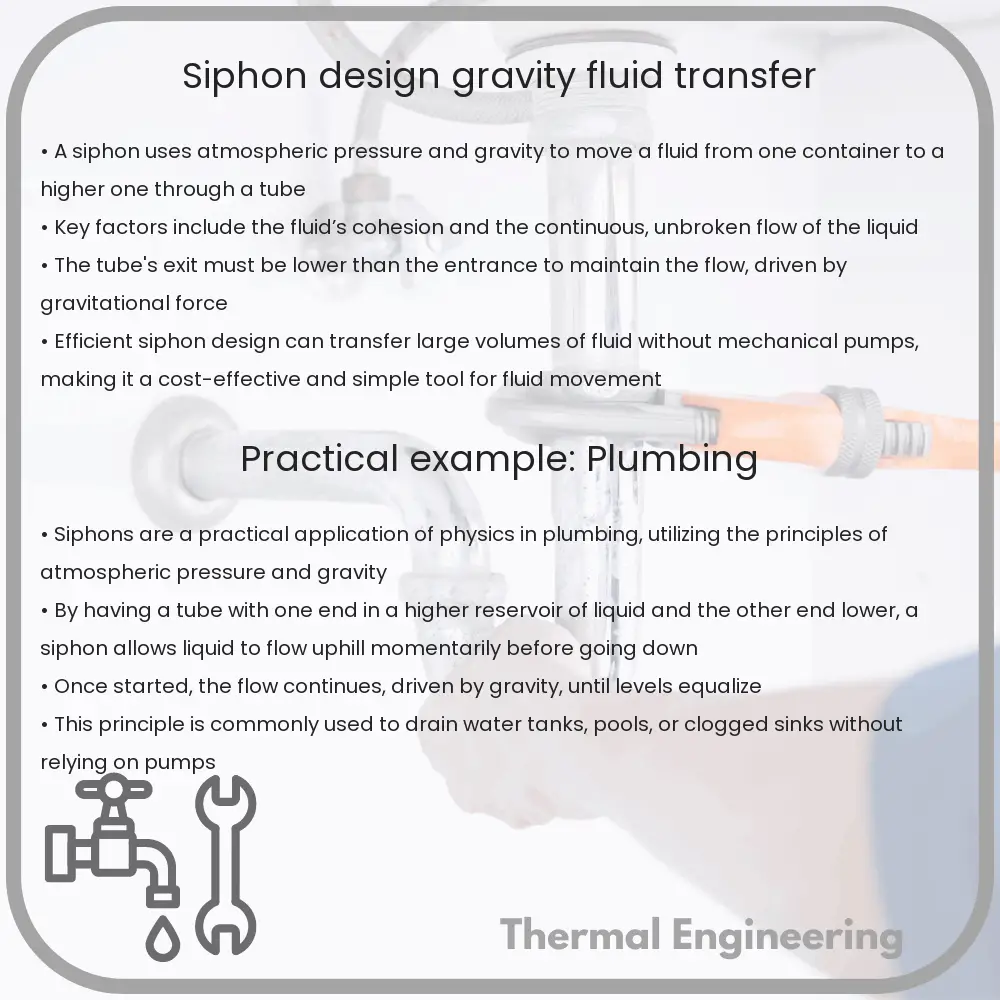Learn how siphons utilize gravity and atmospheric pressure to transfer liquids efficiently between containers at different elevations.

Understanding Siphons: Principles and Applications
A siphon is a simple yet fascinating device used to transfer liquid from one container to another, typically from a higher elevation to a lower one, without the need for a pump. The operation of a siphon relies principally on the principles of gravity and atmospheric pressure. In this article, we’ll explore how siphons work, factors that affect their design, and some practical applications.
How Does a Siphon Work?
Essentially, a siphon consists of a tube with both ends open. To start the flow, the tube is filled with the liquid, which is initially at a higher level. One end of the tube is placed in the source container, while the other end is positioned in the destination container, which should be at a lower elevation than the source. Once the setup is complete and the siphoning starts, gravity pulls the liquid down through the tube, and a continuous flow is established.
The science behind siphoning involves atmospheric pressure and gravity. At the higher water level, gravity forces the liquid into the tube, creating suction at the top. As the liquid exits at the lower end, atmospheric pressure pushes the liquid from the higher reservoir into the tube to replace the exiting fluid. The critical factor for continuous flow is maintaining the outlet end of the tube below the water level of the source container.
Design Considerations for Effective Siphoning
- Tubing Length and Diameter: The length and diameter of the tubing can influence the flow rate. Shorter tubes minimize resistance and can support a quicker flow. Larger diameters reduce resistance and allow for a higher volume of liquid to pass through per unit of time.
- Material: The material of the tube should be selected based on the type of liquid being transferred. It must be durable and resistant to the liquid to avoid contamination and degradation.
- Elevation Difference: There must be sufficient difference in elevation between the source and the destination container. The greater this difference, the stronger the gravitational force acting on the liquid, thus potentially increasing the flow rate.
- Seal and Placement: Ensuring a good seal at the connection points and correct placement of the tube ends prevents air leaks, which can interrupt the siphon effect.
Applications of Siphons
Siphons find utility in various everyday and industrial applications:
- Aquarium Maintenance: Siphons are often used to change water in aquariums without disturbing the aquatic environment.
- Fuel Transfer: They are handy in transferring fuel from one container to another, especially avoiding direct contact and minimizing risk.
- Agriculture: In agricultural settings, siphons are used for irrigation purposes, helping distribute water across fields from water sources situated at higher elevations.
- Chemical Processes: In chemical industries, siphons help in transferring corrosive or hazardous liquids from one process unit to another, enhancing safety by avoiding pumps that might cause sparks.
Understanding the basic principle and design considerations for siphons not only aids in their effective application but also sparks curiosity about fundamental physical sciences principles at play. Whether it’s in simple tasks like siphoning gas or complex industrial operations, siphons demonstrate how fundamental physics can be applied to solve practical problems.
Conclusion
Siphons are a perfect example of how a simple principle can have widespread applications across various fields. By taking advantage of basic physical laws such as gravity and atmospheric pressure, siphons perform an essential function without the need for sophisticated technology. Education on such tools can be essential for innovative solutions in engineering and everyday life.